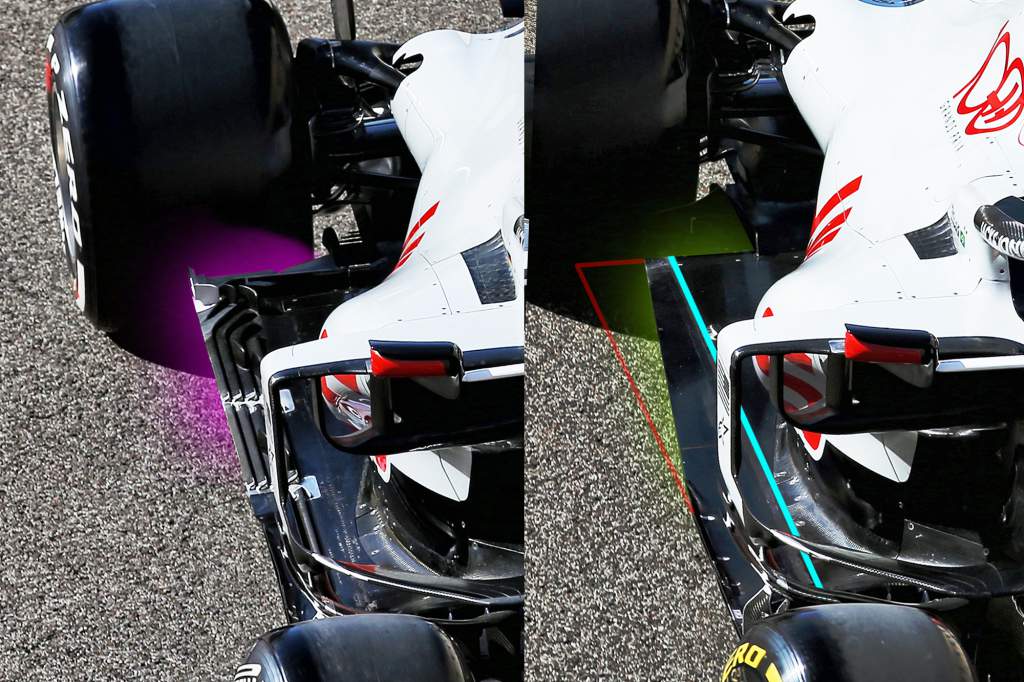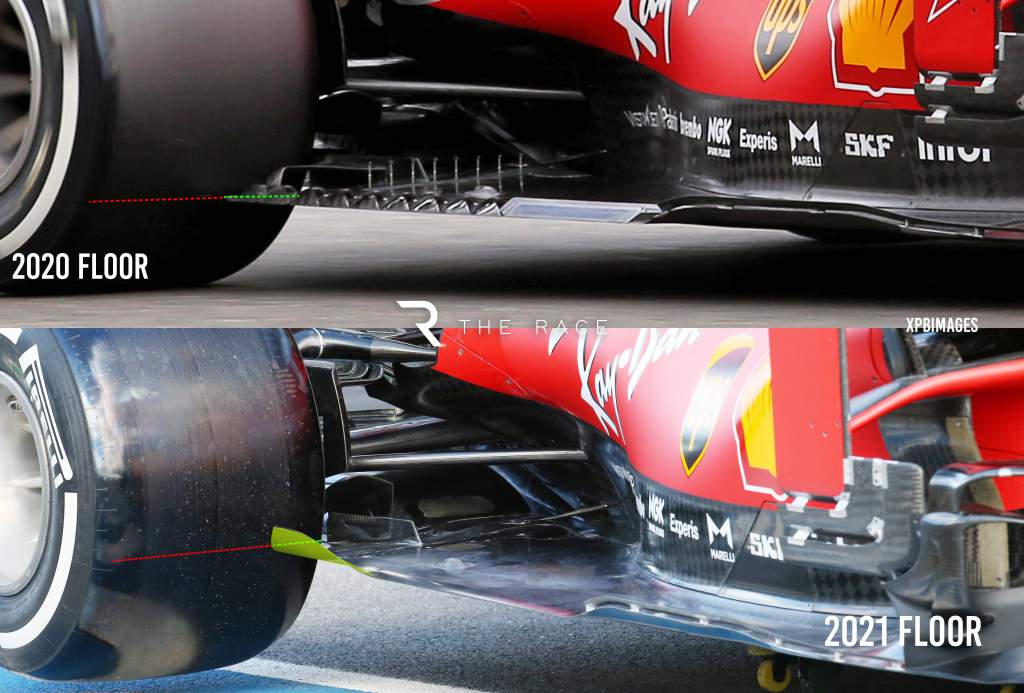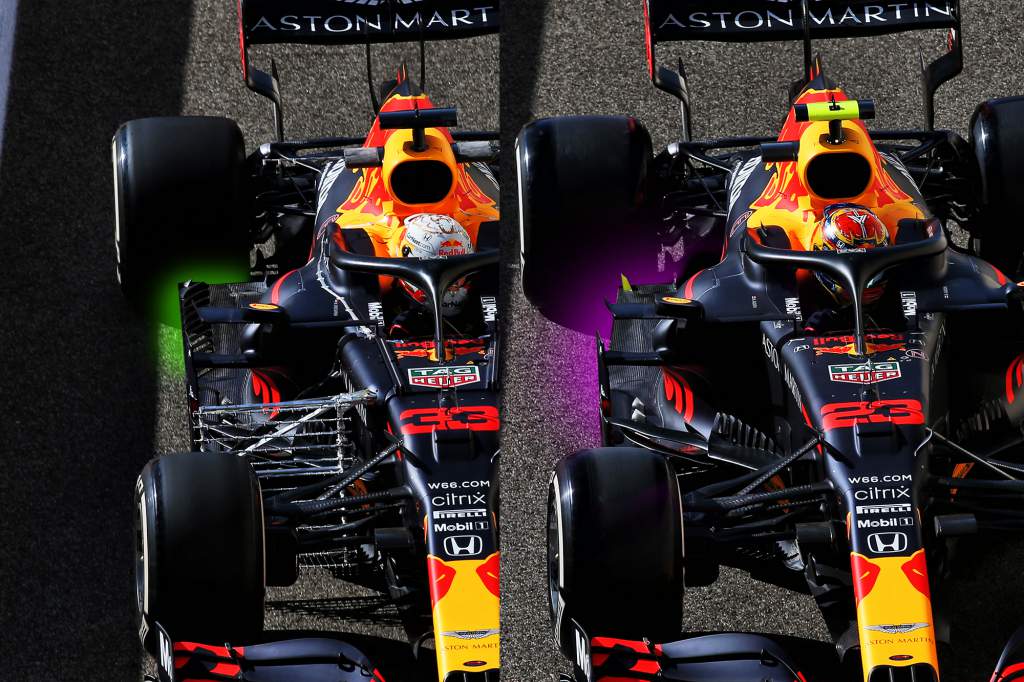Up Next

Plenty of Formula 1 teams have taken the opportunity to test a simple version of the 2021 floor modifications in recent races, with at least five teams running them in Friday practice at the Abu Dhabi Grand Prix.
Ferrari, on Charles Leclerc’s car in FP1 then Sebastian Vettel in FP2, Haas (with Pietro Fittipaldi), Renault (Esteban Ocon), Williams (Nicholas Latifi) and Red Bull (Alex Albon) were among those running experimental floors on day one of the 2020 season finale.
The floor changes are part of a package of rule tweaks for 2021 designed to reduce the downforce levels of the car in order to protect the Pirelli tyres.
The Pirellis are carried over for a third season next year, albeit with tweaks to the construction to improve their integrity – or at least, that’s the intention.
These aero changes, estimated to take 10% of the aero load from the cars but with the expectation teams will claw back at least half of that, also include restrictions to the winglets on the rear brakes and to the diffuser vanes.
We’ve seen various teams trying out such floors in the second half of the season.
Most of these test floors are simply a cut-and-shut job such as the bonded-on outboard part of the floor on the Haas, which is marked with a blue line.

Most teams have approached the modifications in the same way and it’s only a first stab so far.
But it will be fairly representative and give the teams some data to work with when they set about the design of the actual 2021 car’s underfloor.
Track to windtunnel correlation is very difficult with any aerodynamic component working near the ground, so this short test will give a better understanding of its characteristics. The red line on the Haas floor shows the amount of floor that has been removed.

The ‘exclusion zone’ round the rear tyres will make it harder to seal the underfloor in this area, something that will be made even more difficult by the longitudinal slots in the floor also being banned next year. There is also a diagonal cut in the floor that means it narrows towards the rear.
I did a more in-depth column on the 2021 changes earlier this year, which illustrates most of the change, including shortened diffuser strikes and restrictions on the brake duct winglets.
These are all high-downforce-producing aerodynamic components, so as developments on any other areas of the car for 2021 are fairly limited, it’s important teams focus on the areas of these regulation changes.

All changes are based on reducing downforce, so if you can keep what you have in 2020 then you will have done a good job.
In this first session in Abu Dhabi, Fittipaldi was around three seconds slower than Haas team-mate Mick Schumacher’s unmodified Haas.
There’s not to much to read into that as both of them are fairly new to Formula 1, but it’s the only sort of back-to-back we have and it confirms that there are performance losses.



